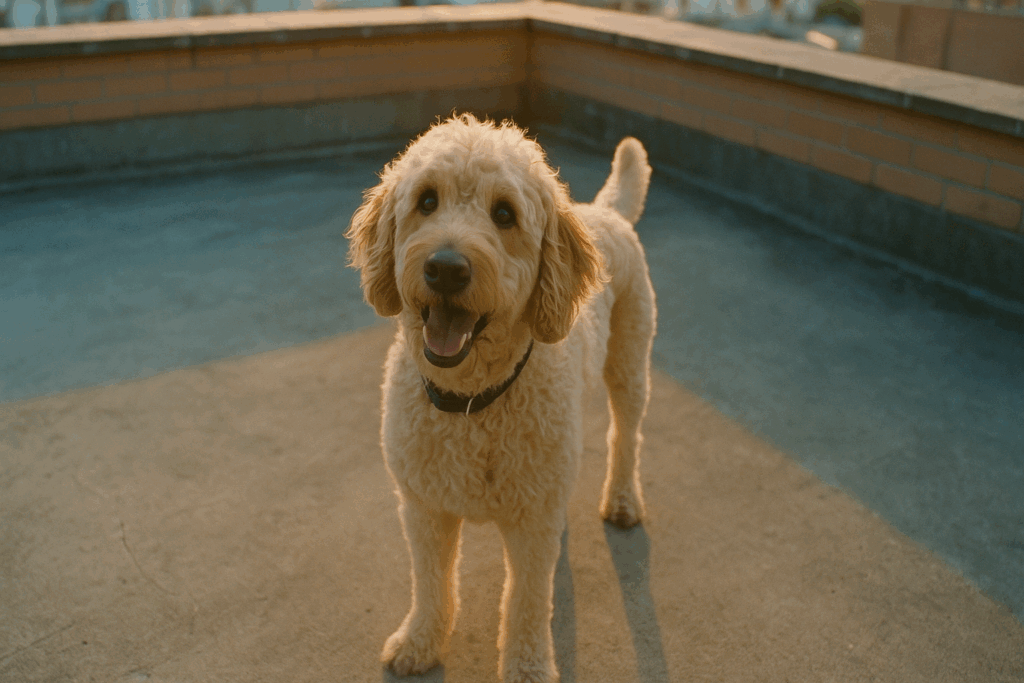Why Breed Knowledge Matters
Getting a dog should start with one simple question: what kind of dog fits your life—not just your weekend plans. Every breed comes with its own traits hardwired into its DNA. Temperament, size, and activity levels aren’t just quirks; they’re realities you’ll live with every single day. A mellow lapdog doesn’t turn into a backyard explorer overnight, and a working breed won’t be satisfied with a ten-minute stroll.
Size alone affects your space, travel, and budget. A Great Dane and a Toy Poodle may both love their people, but one takes up the couch, the car, and half your grocery bill. Energy matters too. High-octane breeds need outlets—mental and physical—or they find their own “jobs,” usually involving cushions or drywall.
Matching a dog to your lifestyle isn’t about being picky—it’s about setting both you and your dog up for a good life, together. Whether you’re a weekend hiker, a stay-at-home parent, or someone clocking 12-hour shifts, there’s a breed (or mix) that fits. Pick smart, and you’re not just getting a pet. You’re gaining a partner who thrives in your world because they were meant for it.
Labrador Retriever
Labradors are a go-to breed for a reason. Their temperament is a blend of friendliness, sociability, and high trainability, making them one of the most adaptable dogs around. They’re naturally eager to please, which makes training smoother—even for first-time dog owners.
They thrive in active households, especially families that spend time outdoors. Whether it’s hiking, playing in the yard, or just long walks, Labs need daily physical activity to stay balanced. They’re also smart—boredom leads to mischief—so don’t skimp on mental stimulation like scent games or puzzle toys. Expect moderate grooming with their dense coats, particularly during seasonal shedding.
Health-wise, Labs are prone to hip dysplasia and can pack on weight if overfed or under-exercised. Keep an eye on meal portions and treats, especially with how enthusiastic they are about food.
Bonus tip: Labradors are always game for fetch—it’s almost a built-in reflex—but their love of play shouldn’t override dietary boundaries. Keep treats lean and play sessions active.
German Shepherd
German Shepherds are smart, vigilant, and deeply loyal. They’re wired to protect and quick to learn, which makes them standout working dogs—and sharp companions for the right people. But they’re not plug-and-play pets. These dogs need leadership, structure, and purpose.
This is a breed best suited to experienced dog owners who can match their energy and channel their intelligence. They thrive in active households where training is both expected and ongoing. Long walks, agility drills, fetch with rules—this dog wants a job. Without that structure, they’ll get restless fast.
Grooming isn’t light work either. Expect frequent brushing to manage their double coat, especially during seasonal shedding. Health-wise, they’re prone to hip and elbow dysplasia and can be sensitive to certain foods—so joint support and digestive care are smart long-term plays.
Bonus tip: early socialization is non-negotiable. Exposure to people, other dogs, and new situations while young helps avoid future reactivity and keeps behavior balanced as they grow.
Golden Retriever
The Golden Retriever lives up to its reputation: affectionate, calm, and always eager to make you happy. These dogs thrive on human connection and aren’t built for isolation—they want to be part of your day, not just your backyard.
Their temperament makes them perfect for families, especially those with young kids, or anyone exploring therapy dog certification. Patience and people-centered behavior come naturally to them.
Care is steady but not extreme. Grooming needs are real—expect regular brushing, especially during shedding seasons. They’ve got a lot of energy too, so daily walks, fetch sessions, or swimming go a long way in keeping them balanced and content.
Health-wise, Goldens are prone to certain chronic conditions. Cancer is sadly common in the breed, along with skin irritations. Regular vet checks and early detection are key.
Extra perk: few breeds match a Golden’s natural gentleness with children and other pets. If you want calm companionship without giving up on play, this dog checks the box.
French Bulldog
Small in size but far from boring, the French Bulldog is a personality-packed breed built for city life. They’re playful without being hyper, calm without being dull, and easily adjust to new routines or environments. Need a chill dog for a one-bedroom apartment? This is your breed.
Frenchies don’t ask for much in terms of grooming—quick brushings, occasional baths, and a wipe-down of their facial folds. What they do need is temperature control. Their flat faces make breathing harder, especially in heat or humidity, and they can’t regulate body temperature like other dogs. Moderate walking or short play sessions are enough to keep them happy.
Health-wise, they’re prone to respiratory issues and some spinal concerns. Regular vet checks and weight monitoring are non-negotiable. Extra pounds can make breathing even tougher.
Bottom line: this little dog isn’t low-maintenance emotionally, but in the right home, it’s a loyal goofball with more charm per pound than most breeds.
Siberian Husky
The Siberian Husky is built like a sled-pulling machine because, well, that’s exactly what it was bred to be. These dogs have energy to burn, an independent streak that can test your patience, and a charming, good-natured attitude that wins people over fast—even if they’re often doing their own thing.
Huskies thrive in households that match their drive. If you’re the type who hikes before breakfast or has kids with boundless energy, this breed may be your perfect match. But they’re not a plug-and-play pet. They need serious exercise, daily mental stimulation, and a yard that’s as secure as a prison yard. They can—and will—explore the world on their own if given the chance.
Grooming isn’t a major process, but you’ll be dealing with a lot of fur. Heavy seasonal shedding means brushing becomes part of your weekly to-do list, whether you like it or not.
Common health concerns include hip dysplasia and inherited eye conditions like cataracts. Regular checkups go a long way.
Bonus tip: Huskies are escape artists. Treat fences and leashes as mild suggestions, and you’ll be chasing one down the block in no time. Secure everything, every time.
Poodle (Standard, Miniature, Toy)
Poodles are sharp-minded and quick to learn. Whether Standard, Miniature, or Toy, they consistently show up as one of the most intelligent dog breeds out there. That makes them a dream for training—and a challenge if you don’t stay one step ahead. They’re lively without being chaotic, and they read the room well, adjusting their energy to match yours.
For households managing allergies, poodles are a solid pick. Their curly fur sheds minimally, though it still needs regular, professional grooming. They’re also top-tier competitors in dog sports—agility, obedience, and even scent work. If you’re active and like a challenge, you’ll both have fun.
But this breed isn’t low-maintenance. Aside from grooming, poodles need mental workouts. Puzzle toys, varied training, or regular tasks keep them from getting bored—which is when the trouble starts. Idle poodles get loud or into things they shouldn’t.
Health-wise, ear infections are a common issue due to those floppy, sealed-off ears. Vision problems can also crop up, so routine vet checks matter.
Bottom line: poodles are thinkers. Keep them engaged, and they’ll give you 100%—brains, loyalty, and a little sass.
Final Considerations
Let’s cut to it—there’s no universal “best” dog breed. The ideal match depends on your lifestyle, your stamina, and how much effort you’re ready to invest. A high-energy Shepherd isn’t going to fit a low-key apartment dweller’s world, just like a French Bulldog might feel lost on a hiking trail.
Time, energy, and consistency in training are non-negotiables. That fluffy puppy will grow. That initial enthusiasm will meet fatigue—and the dog will still be there, needing structure, play, discipline, and care.
And don’t sleep on adoption. Mixed-breed dogs often fly under the radar, but they can be absolute gems—unique personalities, surprising smarts, and unmatched loyalty. Whether you’re going purebred or rescue, the goal’s the same: pick a dog that fits your real life, not an idealized one.
Related Reading
Curious about cats too? You’re not alone. While dogs offer loyalty and energy, cats bring their own kind of companionship—independent, intuitive, and full of personality. If you’re considering adding a feline to the mix or just want to understand how different breeds fit into family life, we’ve got you covered. Check out our full guide: The Best Cat Breeds for Families and Their Unique Traits. It’s a no-nonsense look at temperaments, care needs, and what to expect—cat hair and all.


 Alina Mackchesty brought creativity and insight to Pet Hub Loop, supporting the project with her contributions to design and user experience. Her work helped make the platform both welcoming and practical, enhancing the way pet owners connect with the resources they need.
Alina Mackchesty brought creativity and insight to Pet Hub Loop, supporting the project with her contributions to design and user experience. Her work helped make the platform both welcoming and practical, enhancing the way pet owners connect with the resources they need.